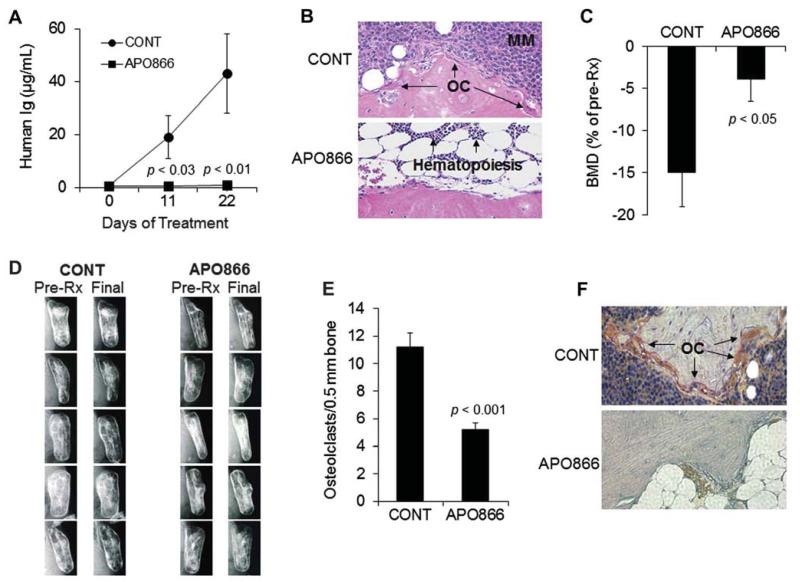Figure 5.
APO866 inhibits primary myeloma cell growth and hone disease in the SCID-rab model. SCID-rab mice engrafted with a patient’s myeloma cells were treated with APO866 (20 mg/kg, twiec a day for 5 days/week, subcutaneously; n = 10) or saline (CONT; n = 10) for 3 weeks. (A) Circulating levels of human immunoglobulins (human Ig) at the indicated time points after treatment show marked inhibition of myeloma growth by APO866. (B) Representative histologic bone sections stained with hematoxylin and cosin show the infiltration of myeloma cells in myelomatous bones from control but not APO866-treated hosts. (C) Bone mineral density (BMD) of the implanted bones from hosts treated with saline (CONT) or APO866. (D) Radiographs of the myelomatous bones from five mice in each group were obtained before initiation of treatment (Pre-Rx) and at the end of the experiment (Final). Note that bone destruction was apparent before the initiation of treatment and continued to increase in the control group, whereas APO866 treatment prevented further bone destruction. (E) Number of TRAP-expressing osteoclasts in myelomatous bones of each group. (F) A representative histologic bone section stained for TRAP shows a high number of osteoclasts in bone from control hosts (CONT, osteoclasts stained red), but not in bone from the APO866-treated host.

